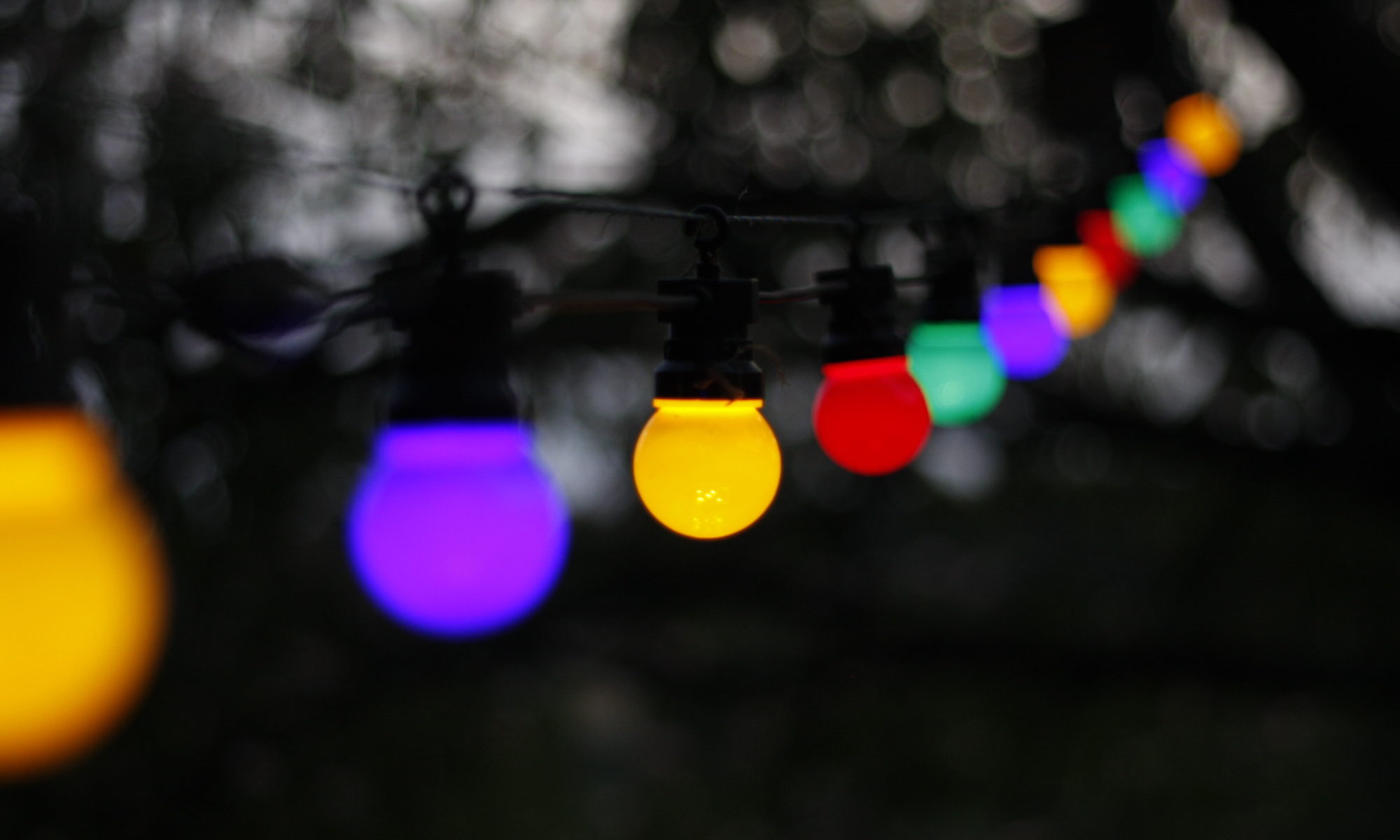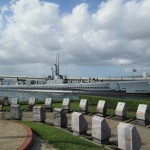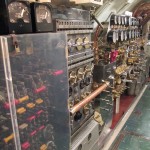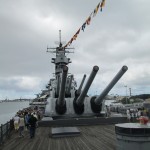
At the border between Thailand and Malaysia, my two travelling companions had decided to catch a train so I figured it would be best for me to do the same. Trains, as oppposed to buses which always tend to resemble each other are a mean of transpiration with a bit more personality. We boarded the 14 o’clock to Bangkok and took out seats in a car that must have been build around the 60’s with ceiling fans, refurbished seats and … no windows, just openings. At least that took care of the ambient heat, but made the voyage very noisy and windy. Something that was easily bearable at the beginning of it, but which became unsupportable after 12 hours. Alas, around two in the morning, we alighted in Surat Thani, where we checked in the only hotel around the station.
A few hours of sleep later, Georgia (from Canada) parted way with us as she had to proceed to Bangkok while Greta (from Italy) and I stuck together as we were pretty much taking the same route from then on: Koh Phangan and then Koh Tao, two very popular islands in South Thailand. After an hour or so walking around and getting confusing directions to the ferry terminal, we finally figured out that it was an hour’s bus ride outside of town. There our choices were also sort of limited and only found a way to our island by transiting through Koh Samui, the bigger island on the south, full of resorts and things we both could not afford. Originally, I had intended to go directly to Koh Tao, the diving island, but Greta had convinced me to stop for a few days on Koh Phangan, the debauchery island, famous for hosting the full moon parties, where all the young travelers in the region converge for a drug fueled night of dancing on the beach. My schedule could afford this deviation.
Koh Phangan
Finally, after two full days of transportation we arrived at our intended destination. There we made the decision to share an hotel room as it made more logistical sense at the time, checked into one and left for dinner. Finding a restaurant provided to be quite a challenge as on top of being vegetarian, Greta was also Italian but eventually, she settled for a place that had a large selection of meat-less dishes and we both ordered a tofu pad thai. Later, a very stereotypical Italian by the name of Daniele that she had met at the airport in Malaysia turned up and we got together for drinks. There, Greta started complaining about stomach pains which progressively during the evening, got worse. Back in the hotel room, she rushed to the bathroom and emptied herself in such a jet of liquid that for a moment I thought she was actually taking a shower. While asleep and thanks to my ability to snooze through jackhammers, I had imagined her ailment had only been transient but felt disappointed to learn in the morning that she had barely gotten any rest and spent much of the night hugging the toilet. We had had the exact same meal, which had most likely been cooked simultaneously in the same pan and I felt normal. My ramblings about the complexities of the human digestive system did not really console her, we had came here to party off the moral righteousness of Malaysian and instead, she was to be bed ridden and weak who god knows how many days.

That morning, Daniele turned up with his new roommate, Steven a pretty cool Irishman. Villages in Koh Phangan are almost made entirely of restaurants, hotels, bars, tattoo shops and clinics, which sort of gives you a rough idea of the kind of activity people indulge in on that island. Steven, inebriated like a proper Irish person often is had asked the barmaid the night before to draw him a picture of “boy meets girls”, which he then promptly had tattooed on his shoulder at the next door parlor. Obviously very hangover the next day, he had forgotten about this little adventure but got his memory refreshed by the avalanche of derogatory comments about his drunken stupidity on his Facebook feed. What amazes me was his ability to take the whole situation with humor, which for a moment distracted Greta away from her stomach issues. He first came across to me a drunken foreigner idiot out for a bout of binge drinking in Thailand, but the more we discussed the more I discovered the intelligent side of him. He actually worked for the Game of Thrones TV series and anyone who watches the least bit of television has heard of this magnificently executed production. Steven had loads of crazy stories to tell about the filming and gave me some pretty cool insider details on how they manage to turn papier mâché structures into awesome castles.

That night was the night of the black moon party, the reason we had come to the island and luckily, Greta began feeling better and better as the day progressed. Since the full moon party can only happen once every 28 days or so, the locals organize a black moon party (no moon) and two half moon parties to make sure the influx of tourist to their island stays relatively constant. So that evening, after some pretty good pizza at an Italian joint chosen by none other than Daniele, we boarded a taxi and made our way to some undisclosed location in the jungle. I’m not going to do into lengths describing the event because 1) it sort of sucked and 2) it’s not my sort of thing, but it had a setup made of funky sculptures and large mushroomy dome covering the dance floor. Fluorescent body painting stands greatly outnumbered those where you could actually purchase (overpriced) liquor at and the music was of the psychedelic trance type which to the untrained hear sounded like the exact same beat looping over and over again. Obviously, half the people there must have been on shrooms (drugs). We left pretty early considering the event was to end at 10 in the morning but at least we got that box checked.

Not much happened the following day but at night, we had planned to try the famous mushroom shakes, which ended up falling through as only Steven and I were up for it. This evening though, we were finally informed about the place to be for that sort of think on Koh Phangan, a bar only accessible by boat, open 24/7 and which tips off the police to stay away. Basically a drug supermarket, where weird things happen and from which people don’t really come back, but most likely because having spent all their money on psychedelics, can no longer afford the steep cost of a longboat back.
Koh Tao
Already quite fed up with the climate on the party island, I was anxious to get to Koh Tao, the diving one. Rimas, a friend, was expecting me and Jesse, an American I had met while in Seoul and with which I had planned to do some motorcycling around Thailand was also arriving on that same day. I left the others behind and took the ferry where I met a girl who upon laying her eyes on my Utila t-shirt, told me she had also spent a month there and after a few minutes of conversation, we realized that we had been following each other’s footsteps in Central-America by a week’s interval. She had been at the same diving school as me and had met and befriended the people I knew there; small world, good memories. Once in Koh Tao, my two friends were staying at opposite ends but I immediately took a cab to Rimas’ side of the island, where within a couple of minutes of meeting him he kindly offered me his couch in a small apartment he was renting. With accommodation sorted out for the next few days I unpacked my things and set out to rent a scooter for me and Rimas to drive to Sairee beach, a town some kilometers north where Jesse was staying.
The traffic on this island is crazy and unsurprisingly, you see people bandaged up all over from falling and scraping and still you see most of them riding in flip-flops and without helmets. To be honest, I would have rather not rented a scooter, but the taxis there run a cartel and fix the prices. Going to Sairee beach from the southern tip of the island is 400 baht (14$) one way while a scooter for 24 hours is 150 baht. It’s easy to guess which is he more economical option. I met up with Jesse and two other guys he had met on the way there, an Italian and a Portuguese, we all had dinner and went to a beach bar for some fire shows. Around 2 in the morning, I hoped on my scooter and slowly drove back to Rimas’ apartment, knowing that in spite of having limited my alcohol intake, if I was in Canada I would probably be over the legal limit but this being Thailand and on Koh Tao in particular, the police turns a blind eye to drunk driving.

Rimas was diving with Buddah View so I figured I should give them a try. I took the morning easy and in the afternoon booked a UV night dive with them and proceeded to visit the island on my scooter. While it was for the most part driving on steep dirt roads, the island had a few mountains which offered some great panoramas. Later, my ride surrendered back to its owner, I prepared my equipment for the night dive and hoped on the pick-up truck which took me to the boat dock and boarded the diving vessel. This is also where I was told the dive was not UV, it was just a normal dive. A UV dive is done at night and is the underwater equivalent of being in a club full of UV lights. You where a special lens on top of you mask and carry an ultraviolet torch in lieu of a normal one and supposedly, it makes the wildlife and plants down there glow in very psychedelic ways.
There is a staggering number of dive shops on Koh Tao, more than 40 I think. Since most of them cannot afford to have direct access to a dock, their ships all moor at the island’s main pier and they transport their customers between there and their shop on trucks. Some have air compressors on board their ships, but most of time, the crew has load and unload all the tanks as well. Quite a pain in the butt compared to what I am used to. Anyway, we sent to site called Junkyard, which is flat sand patch with a bunch of metal structures, a truck and some other items like a gym set scattered around. Not that interesting, but that night, I set a personal record of 70 minutes under, probably owing to the fact that since there was nothing to get excited about, my air consumption remained low due to boredom. On the way back to the shop, I put my name up for the morning’s two dives and met up with Rimas for dinner and some drinks (lots in fact).

Up bright and early, same routine of getting to the boat for diving. A ship it should be called actually, as it can take about 50 divers at once and even provides lodging for part of its crew, which while we were returning from the first dive, was chopping up squid and cooking rice. Neat I thought, what a nice snack but no, it was not for us. The first site we visited was named Green Rock and it was only me, Rimas, and the guide. It was fun, lots of swim throughs and little caverns to crawl around, but I came back up with several cuts and scrapes from trying to fit myself into small orifices. In case your wondering blood looks green underwater To my great disappointment, the location of the second dive got changed to Junkyard again, which was day or night, ended up being junk.
I rented a scooter again to visit Jesse and his friends and on my walk to the restaurant, stopped at a small dive shop named New Wave Diving to inquire about their pricing. Instantly, they welcomed me in a very friendly and professional way and right off the bat offered me a decent discount due to my experience. When I asked if they were going to the wreck, they replied that no but they would try to accommodate me by maybe selecting a nearby dive site and dropping me off there. Since I felt I had to give another opportunity for Koh Tao to surprise me, I told them there was a 90% chance I’d be there. Not much happened on that night as my friends were recovering from a Thai whisky hangover so I made home early. The following afternoon, as promised I showed up at the dive shop and just like the previous night, were very welcoming. Much better already, the previous company had became much to large to provide any sort of personalized service and contented itself on churning out divers like a factory, just living off a reputation of excellence in teaching but certainly not in customer service. Some do not really mind but in my case, since I’m almost always going along, I expect to be able to socialize a bit on the dive. Added bonus, I was alone with my guide, who was actually was only a dive master in training so in effect, I was the one taking him out.
This afternoon, we started with a dive at Green Rock, of which I did not see much for my rental mask was fogging all the time. Normally I carry my own. Masks are sort of like underwear, they are adapted to your morphology and being in close proximity with eyes, nose and mouth, can actually transmit diseases and infections if not properly cleaned between users. Stupid me though, I had lost mine on Koh Phangan. For the second dive, my guide kindly offered me his own and we were dropped of at the wreck while the rest of the group kept going to a nearby site. The HTMS Sattakut, an almost 50 meters long ship sunken to make an artificial reef lied almost 30 meters down below. Again the visibility was not that great, especially where the ship contacted the sea floor and we could only stay down so long as my guide had been diving in the morning and would hit his no-decompression limit way before I did but it remains that I really enjoyed my time under. Large fishes, and lots of cool stuff to see down there. After 25 minutes or so, we rose to a shallower depth and started finning westward to another dive site, which would get us closer to the boat. The site, a pinnacle, provided a scenic ascension to the surface from its bottom at 20 meters or so to its top at 5.
Satisfied with my afternoon, I gave farewell to the staff and went purchasing tickets to Bangkok with Jesse. Got back to Rimas’ apartment, dropped my stuff, desalinized, changed, met him for dinner and came back into town for my last night on Koh Tao. We remained for some hours at Jesse’s hostel where they had a party going but later went to a beach bar, where I was supposed to meet Greta. Being the Italian that she is, she was more than an hour late. While looking for her, I ran into a group of Danish guys I had met in the Pehrentians so that was a bit of a coincidence. The night out ended late and I drove my scooter carefully to my end of the island for one last night on the concrete floor. Rimas did not have a mattress, so all I had to rest on was my sleeping back and a couch that soon provided to be too short to sleep on. Early the next day I took my leave from my host, but not before thoroughly thanking him for his hospitality. Since both of us are into the same activity I guess, the chances of seeing each other again are pretty high, especially that he might end up working in Mexico, which thanks to cheap discounted flights is basically next-door to Canada.

Soon I was aboard the high-speed ferry and Koh Tao was retreating in the distance. Certainly happy I had visited the island, I was nonetheless relieved to leave it. Me and Rimas had discussed this at length some evenings ago and both agreed that we each vastly preferred Utila in Honduras. Understandably, before coming there we had projected our previous experience onto Koh Tao as this is what we had to compare it with. Regrettably, we had raised our expectations too much as for the both of us this island did not deliver (or it did in too great quantities): too much partying, too much people, too much traffic, too big, too many dive shops, too touristic, in short, too much everything. Too bad, since we had both been considering the place for work in the near future. Enough complaining.
Dammit, this was way too much writing for such a short period of time, but I’m in a bus towards Pai at the moment and don’t have much else to do.












































